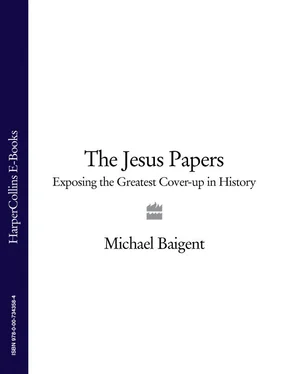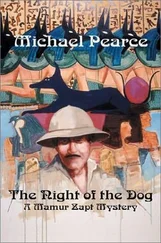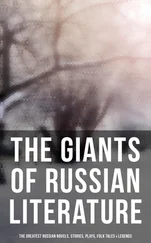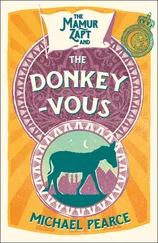When the photography was finished and the cardboard sheets were being placed back into the trunks, I gave a handful of exposed film rolls to one of the owners. He looked down at them.
“Where is the other film?” he said immediately. He had been counting.
“Other film?” I said lamely, trying to present an image of abstracted innocence while ostentatiously patting my pockets.
“Oh. You’re right. Here it is.” I produced the film I was hoping to keep. I was irritated and rather depressed. I really wanted to have some proof of what I had seen.
At that point my friend realized what I was up to and, in an inspired move, came to the rescue.
“Where are you getting these films developed?” he asked innocently.
“At a photographic shop,” replied the man holding my film.
“That’s not very secure,” said my friend. “Look, Michael was a professional photographer, and he could do all the developing and print you off as many sets as you need. That way there is no risk.”
“Good idea,” the man said and handed back the films.
Naturally I printed a full set of photographs for myself. Later I arranged to meet the Jordanian—who seemed to be in charge—for lunch, where I was to give him the prints and negatives. During lunch I argued that if some scholars could look at the texts and identify what they saw, then perhaps their insight would be helpful in raising the value of the collection. I asked the Jordanian if he would give me permission to speak to a few experts on the matter—very discreetly, of course. After some thought, he agreed that this was probably a good idea, but he made it very clear that neither I nor the experts could talk about this collection to anyone else.
Several days later I went to the Western Asiatic Department of the British Museum with a full set of prints. I had dealt with the department before during the course of researching one of my books, From the Omens of Babylon , and I trusted the scholars there not only to give me an honest opinion but to maintain confidentiality as well.
The expert I had dealt with before was not there, and one of his colleagues came into the small anteroom and spoke with me instead. I briefly told him the story about the trunks of documents and about my photographs. I stressed that this was a commercial exercise for the owners and that I would be very grateful for his discretion, since large sums of money sometimes cause equally large problems. I requested that he find someone competent in the field to take a look at these photos to see if they were of any importance. If so, I would do my best to get the interested scholar access to the entire collection. I then passed over my set of prints.
Weeks passed. I heard nothing from the British Museum. I became concerned. Finally, after a month, I returned to the museum and made my way up to the Western Asiatic Department. I met with another expert there.
“I brought a set of photographs in a month ago, which I had taken of a large number of papyrus texts. I have not heard anything back from you. I wonder if anyone has had a chance to take a look at them?”
The expert stared at me blankly.
“What photographs?”
I went through the story again for his benefit. He seemed distracted, unconcerned. He had not heard of any such photographs being brought into the department; in any case, it wasn’t his field. They were most likely given to another specialist who was working there for a time and who had now left.
“Where has he gone?” I asked.
“I don’t know” was the reply. “I think to Paris. I am sorry about your photographs.”
I never heard any more about them. Without a written receipt for them, there was nothing I could do. Luckily I had a few reject prints still at home so I could prove that the collection did in fact exist, but not nearly enough to give anyone an idea of the range of subjects that might have been in it. An expert, looking at my few remaining prints, identified most of the texts as records of commercial transactions.
Ten or twelve years later I was walking down a street lined with expensive shops in a large Western city when I saw one of the Palestinians who had been present in the bank that day. I went up to him and asked if he remembered me.
“Of course,” he replied. “You were the colleague of…” and he gave the name of my friend.
“You know,” I began, “I have always wondered what happened to those ancient texts I photographed that day in the bank. Were they ever sold?”
“I haven’t heard anything about them,” he quickly replied, unconvincingly, and then, giving a good impression of being rather busy, he elegantly and politely excused himself and walked off.
I cannot say that I was surprised, for I have spent many years living in a world where potentially crucial keys to the mysteries of our past are simultaneously available and elusive. As we will see, these trunks of documents are not the only such examples of important evidence remaining, tantalizingly, just out of reach.
Throughout my career I’ve enjoyed correspondence with other historians and researchers into the truth behind accepted history, but some letters demand more attention than others. This letter certainly did.
“May I advise you that the ‘treasure’ is not one of gold and precious stones, but a document containing incontrovertible evidence that Jesus was alive in the year A.D. 45. The clues left behind by the good curé have never been understood, but it is clear from the script that a substitution was carried out by the extreme zealots on the journey to the place of execution. The document was exchanged for a very large sum and concealed or destroyed.”
Richard Leigh, Henry Lincoln, and I simply didn’t know what to do with this note. It came from a respected and highly educated Church of England vicar, the Rev. Dr. Douglas William Guest Bartlett. By “the good curé” Bartlett was referring to the Abbé Béranger Saunière, the priest of the small hilltop village of Rennes le Château, nestled in the foothills of the Pyrenees.
Abbé Saunière was appointed priest at the village in 1885. His annual income was approximately ten dollars. He gained a notoriety that has lasted to the present day by obtaining, in the early 1890s, from mysterious sources, for equally mysterious reasons, considerable wealth. 1 The key to his wealth was a discovery he made while restoring the church in 1891. But the “treasure” he found, according to Bartlett, was not the glittering deposit we had at first supposed (perhaps the lost treasure of the Temple in Jerusalem), but something far more extraordinary—some documents concerning Jesus and therefore the very basis of Christianity. At the time this seemed too wild for us to even consider and so we left it “on file.”
We had certainly suspected that something odd was going on in the dark corridors of history, but while working on Holy Blood, Holy Grail we were discovering all manner of unexpected and highly controversial data that would take us far away from the concerns of this letter, so we tabled it for future scrutiny. Jesus’s survival was simply not an important issue for us at that time, as our focus had become fixed on the possibility that prior to the crucifixion he had at least one child—or had left his wife pregnant. So whether Jesus’s life ended on the cross or not seemed irrelevant to our developing story of his marriage, the survival of his bloodline down through European history, and its symbolic expression in the stories of the Holy Grail, stories that formed the backbone of our best-selling book Holy Blood, Holy Grail , first published in 1982.
Yet, intrigued by this bland, outrageous, but confident letter, we kept returning to it. “What,” we asked ourselves, “would constitute ‘incontrovertible evidence’ that Jesus survived and was living long afterwards?” “What, in fact,” we thought, racking our brains, “would constitute incontrovertible evidence of anything in history?” Documents, we supposed, but what sort of documents would be beyond doubt?
Читать дальше












